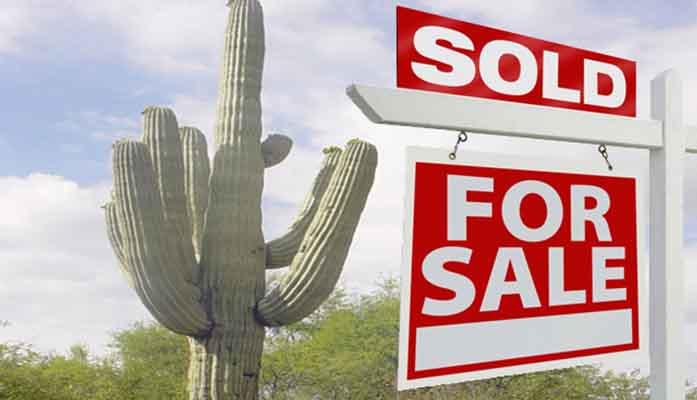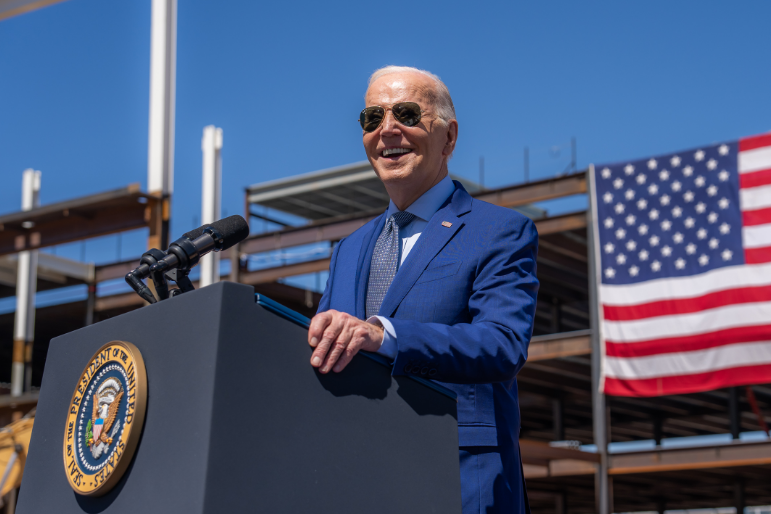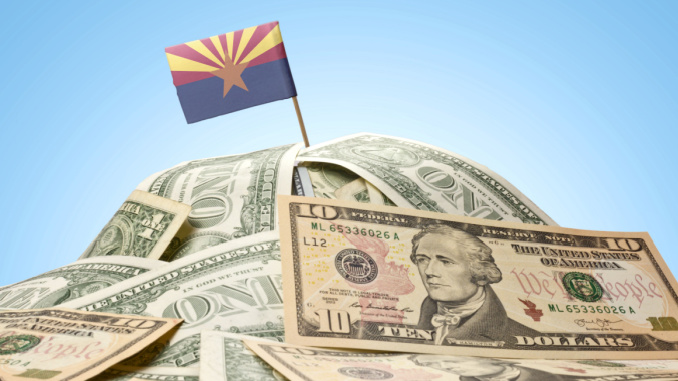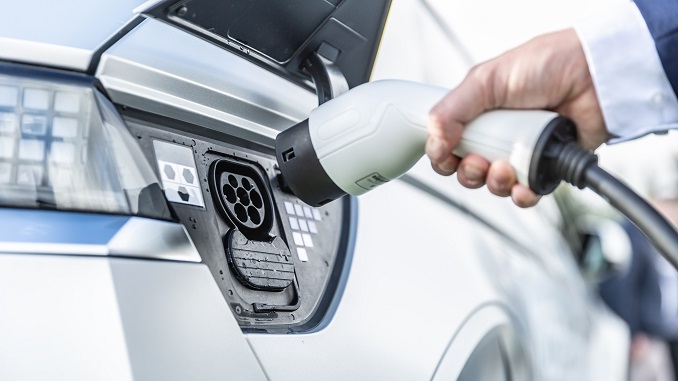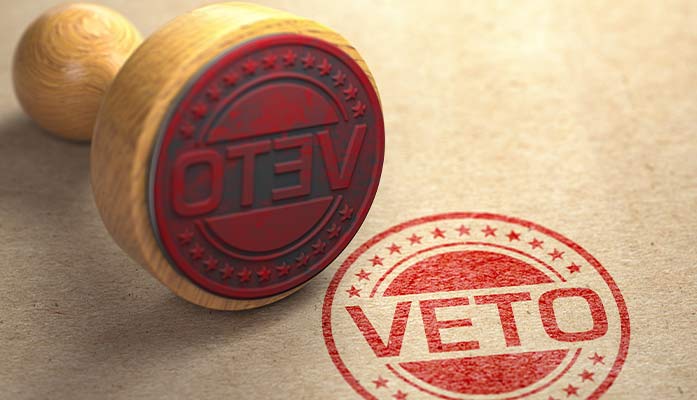
by Elizabeth Troutman | Mar 25, 2024 | Economy, News
By Elizabeth Troutman |
Inflation persists due to record levels of spending over the past three years, according to Rep. David Schweikert, R-Ariz., in a speech on the House floor Thursday night.
Schweikert said the total deficit spending for FY24 will be dramatically higher than both the Congressional Budget Office (CBO) and the Office of Management and Budget (OMB) initially projected if the national debt continues to increase at the current pace of over $99,000 per second.
Last May, Congressional fights over the next speaker overshadowed the greater concern, the national debt, Schweikert said.
“And think of this — in that time, we were fighting over like $16 billion,” he said. “We’re borrowing about $9 billion a day. So we’ve gone how many months, and we’ve never gotten around to actually working on the real problems because of the theatrics around here.”
As a result, the Scottsdale-Phoenix area resident said the Congressional Budget Office missed its FY24 deficit spending projection by $1 trillion.
Interest spending alone is projected to top $1 trillion this fiscal year, he said.
“When I came here a couple of months ago and said we could be heading for $1 trillion [in interest spending], I got mocked. I even saw my colleagues go, ‘Schweikert, you’ve got to stop making things up!’ Well, turns out I’m right,” he said.
“We will spend all day fighting over a few million here, which is important, and I am willing to cut these things, but we’re picking up pennies off the ground as the avalanche is crushing us,” he continued. “Because that same day we fought over those millions, we borrowed $9 billion a day when we are fighting over millions. Understand, $1 trillion has 12 zeros. Start to work your zeros and understand the scale.”
Addressing inflation, Schweikert said America is paying the price for spending money in ways that did not actually spike productivity. He said subsidizing things does not yield the most efficient and cheap way to produce them.
Schweikert advocated for a level of competition so the best, fastest product is rewarded.
“The last two months, [inflation] hasn’t been going down the way it’s supposed to,” he said. “So expect these interest rates I just showed you to continue. And if you live in my neighborhood, if you live in the Scottsdale-Phoenix area — wonderful area, absolutely incredibly beautiful this time of year. From January 2021 to two months ago, if you’re not making 23.6% more, you are poorer today than you were in January 2021.”
Making Americans less sick with new healthcare technology is one of the most powerful things we could do to lower the national debt, he said. Six weeks ago, the FDA approved the first cure to sickle cell anemia.
“Artificial intelligence is about to have a revolution in bringing cures to market dramatically faster,” Schweikert stated. “We’ve actually now had the first couple of AI drugs designed to make it through the FDA.”
Schweikert said policies can make it possible to bring new drugs to the market without costing $100 million.
“Do we think about things we could do in farm policy and nutrition policy in helping our brothers and sisters live better, healthier, more prosperous, [improve their] ability to join the labor force, maybe family formation, crushing income inequality,” he asked his fellow congress members.
Elizabeth Troutman is a reporter for AZ Free News. You can send her news tips using this link.

by Elizabeth Troutman | Mar 25, 2024 | Economy, News
By Elizabeth Troutman |
Arizona ranked fifth out of states adding the most mortgage debt between quarters three and four of 2023 according to a WalletHub survey.
WalletHub released a report Friday showing in what state homeowners are struggling the most in response to the upward trend of mortgage debt over the past few years.
The personal finance website compared the 50 states based on its proprietary data on mortgage debt from Q3 to Q4 2023.
Mortgage debt is by far the biggest category of debt for Americans, with the average household owing around $100,000. WalletHub found the total balance to be more than $12 trillion.
“Mortgage rates are the highest they’ve been in around a decade, and home prices have seen a meteoric rise in recent years as well,” WalletHub Editor John Kiernan said in a news release. “Even small increases in home prices can lead to thousands of dollars in extra mortgage interest costs for homeowners, so it’s important to choose wisely when deciding where and when to buy a house.”
The average mortgage balance in Arizona increased by 0.068% from Q3 to Q4 2023, and the average mortgage balance was more than a quarter of a million in Q4 2023.
The Grand Canyon state’s average monthly payment for mortgages in Q4 2023 was $1,751.
The states ahead of Arizona for adding the most mortgage debt included Maryland, Nevada, Hawaii, and Texas. The states with the smallest increases to mortgage debts were Wyoming, Delaware, and Vermont.
Elizabeth Troutman is a reporter for AZ Free News. You can send her news tips using this link.

by Daniel Stefanski | Mar 22, 2024 | Economy, News
By Daniel Stefanski |
The Grand Canyon State welcomed a grand manufacturing funding expansion this week.
On Wednesday, President Joe Biden appeared in Chandler, Arizona, at the Intel Ocotillo location to “announce that the Department of Commerce has reached a preliminary agreement with Intel to provide up to $8.5 billion in direct funding along with $11 billion in loans under the CHIPS and Science Act.” According to a White House fact sheet, this investment would “support the construction and expansion of Intel facilities in Arizona, Ohio, New Mexico, and Oregon, creating nearly 30,000 jobs and supporting tens of thousands of indirect jobs.”
In a post on “X” after his speech, President Biden wrote, “Semiconductors are the tiny computer chips smaller than a fingertip that power our everyday lives. We invented them, but over time we moved manufacturing overseas. I came to office determined to bring their production home. That’s what our CHIPS Act does.”
Arizona Governor Katie Hobbs attended the event at Intel and spoke to attendees. After the announcement, Hobbs championed the increased funding for a vital sector within her state, saying, “I’m excited to announce that Intel will receive a historic investment from the CHIPS Act, made possible thanks to President Biden’s leadership. This critical investment will drive innovation, create jobs, and solidify Arizona’s position as a leader in semiconductor manufacturing.”
Hobbs added, “Our success story is only possible with our exceptional workforce. BuildItAZ, Future48 Workforce Accelerators, and semiconductor apprenticeships will help ensure Arizonans are ready to take advantage of these good paying jobs. Intel has been a leader in the Arizona business community for decades. Thank you to CEO Pat Gelsinger for continuing our partnership. Your vision and leadership are driving innovation, creating jobs, and strengthening Arizona’s position in the global semiconductor industry.”
Gina Raimondo, the Secretary of the Commerce Department, also took part in the gathering at Intel. She shared, “Today, we announced an $8.5 billion preliminary agreement with Intel that will help strengthen supply chains, revitalize American semiconductor manufacturing, and create nearly 30,000 jobs. It was great to join President Biden in Arizona to share the news.”
“Today is a defining moment for the U.S. and Intel as we work to power the next great chapter of American semiconductor innovation,” said Intel CEO Pat Gelsinger. “AI is supercharging the digital revolution and everything digital needs semiconductors. CHIPS Act support will help to ensure that Intel and the U.S. stay at the forefront of the AI era as we build a resilient and sustainable semiconductor supply chain to power our nation’s future.”
Daniel Stefanski is a reporter for AZ Free News. You can send him news tips using this link.

by Elizabeth Troutman | Mar 21, 2024 | Economy, News
By Elizabeth Troutman |
Arizona ranked as the nation’s 10th most federally dependent state in 2024, according to personal finance website WalletHub.
WalletHub compared the 50 states across three metrics: return on taxes paid to the federal government, federal funding as a share of state revenue, and share of federal jobs.
While Arizona’s overall rank was tenth, the Grand Canyon state ranked 15th for return on taxes paid to the federal government, fifth for federal funding as a share of state revenue, and 23rd for share of federal jobs.
President of the Arizona Free Enterprise Club Scot Mussi took issue with WalletHub’s methodology.
“WalletHub doesn’t do a great job outlining their methodology, but from what I can gather they are basing ‘dependency’ on federal payouts, regardless of the purpose of the funds,” Mussi said. “For example, states with more military bases are likely punished as being more ‘dependent’ on federal funds. So to rectify the dependency problem should we equally spread out military bases among all 50 states so that every state receives equal funding? That makes no sense.”
Mussi said he wonders if Arizona has a higher dependency score due to the number of retirees from states like Illinois and California.
“Because people choose to come to Arizona, does that mean we are a “dependency” state?” Mussi asked. “Again, not a great metric to measure dependency.”
Blue states were found to be less financially dependent than red states.
“Regardless of whether the distribution of federal funds is fair or not, living in one of the most federally dependent states can be beneficial for residents,” WalletHub Analyst Cassandra Happe said in a news release. “For every dollar residents of the top states pay in taxes, they get several dollars back in federal funding, which often leads to higher-quality infrastructure, education, public health and more.”
Alaska was found to be the most federally financially dependent state, followed by New Mexico, Kentucky, West Virginia, and Mississippi. New Jersey ranked as the least dependent.
“Alaska is the most federally dependent state, with over 57% of the state’s revenue coming from federal funding,” Happe said. “For every $1 that residents pay in taxes, the state receives $2.47 in federal funding. Plus, nearly 5% of Alaska’s workforce is employed by the federal government, one of the highest rates in the country.”
Vanderbilt professor Carolyn J. Heinrich said federal resources often support programs that increase societal benefits and reduce societal costs.
“For example, Title I funds in education are distributed according to the level of family economic disadvantage, recognizing that it is important to ensure that all children are healthy and well-educated,” she said. “State resources may be prioritized for uses that yield benefits primarily within the state, such as economic development incentives.”
Mussi said he does think there are examples of states benefiting from their congressmen bringing home federal money for special interest and pork projects.
“Senators from West Virginia have been notorious for this activity, and it should be opposed,” he said. “But metrics like state dependency don’t ever seem to accurately reflect this type of activity, so we usually never rely on them.”
Elizabeth Troutman is a reporter for AZ Free News. You can send her news tips using this link.

by Elizabeth Troutman | Mar 20, 2024 | Economy, News
By Elizabeth Troutman |
Reports show that the Biden administration plans to finalize its final tailpipe emissions rule for cars and trucks on Wednesday, a measure 61% of Arizonans oppose.
The final EPA rule covers both carbon dioxide and conventional pollutants for vehicle model years 2027 through 2032. This is part of the administration’s effort to ban new gas, diesel, and flex fuel vehicles from the U.S. market.
The possible rule could mean that nearly 70% of cars sold in 2032 would need to be electric vehicles, though this is not achievable with our current infrastructure and would make us more reliant on China, according to government relations firm AxAdvocacy.
Chet Thompson, American Fuel & Petrochemical Manufacturers (AFPM) president and CEO, said the EPA policy will feel like a ban for consumers.
“It will vastly restrict both their access to and ability to afford new gas cars, trucks, SUVs and traditional hybrids,” Thompson said. “And there are no offramps in the policy in the event our infrastructure isn’t ready or consumers simply don’t buy EVs at the rate EPA would like. This is exactly why 75% of registered voters solidly oppose any government efforts designed to ban gas, diesel and traditional hybrid cars.”
President Joe Biden has been clear since 2020 he intends to use his federal agencies and the state of California to eliminate sales of new gas cars.
“While multiple administration policies push us toward this end, the Environmental Protection Agency’s (EPA’s) passenger vehicle standards will do most of the damage on their own—requiring approximately 70% of new car sales to be electric in less than eight years,” he said. “This policy is bad for consumers, the economy and national security.”
“It will sacrifice our hard-won U.S. energy strength for even greater dependence on China and the EV battery and mineral supply chain China controls,” Thompson continued.
Only 16% of Arizonans support the rule, which would deprive Americans of the right to select the car best for them, their families, and their budgets.
Opposition for the rule is high in the key presidential and senate battleground states. Almost 90% of Michiganders oppose efforts to ban new gas cars and impose electric vehicle mandates.
In Wisconsin, 64% of residents oppose the measure, while 57% of Pennyslanvanians oppose, 61% of Nevadans oppose, and 66% of Ohioans oppose. Only 9% of Montana residents support the potential rule.
Elizabeth Troutman is a reporter for AZ Free News. You can send her news tips using this link.

by Daniel Stefanski | Mar 19, 2024 | Economy, News
By Daniel Stefanski |
A bipartisan housing bill from the Arizona State Legislature has met its demise.
On Monday, Democrat Governor Katie Hobbs vetoed HB 2570, which would have “create[ed] municipal prohibitions relating to home designs and single-family home lot sizes” – according to the overview provided by the state House.
In a letter explaining her veto to House Speaker Ben Toma, Hobbs said, “I was elected on a promise to bring thoughtful leadership to the Governor’s Office and always do the right thing for the people of this state, even when it’s hard. Unfortunately, this expansive bill is a step too far and I know we can strike a better balance. This is unprecedented legislation that would put Arizonans at the center of a housing reform experiment with unclear outcomes. It lacks the nuance necessary for statewide reform, and I do not believe it is in the best interest of the people in this state.”
Senate President Warren Petersen blasted the governor’s decision on the bill, writing, “Our kids can’t afford a home. Today, the Governor sided with bureaucrats, instead of our kids. Thanks to her, affordable starter homes remain illegal in Arizona. But it’s not just our kids. Every day, we hear from active-duty military, veterans, young families, young professionals, firefighters, teachers, police officers, service workers, and seniors on fixed incomes that they are either facing the grim reality of becoming homeless or are being prevented from participating in the American dream of homeownership because of outrageous prices, partly due to reckless big government regulations imposed by cities and towns.”
The Senate Republican Caucus’ press release highlighted that Hobbs became the “first Governor in the nation to block a bill removing zoning restrictions to bring housing prices down for hardworking citizens.” The release asserted that “the status quo currently limits options, which can tack on tens of thousands of dollars to the sale price of a home.”
Hobbs pointed to push back from the Department of Defense and Professional Fire Fighters of Arizona over the bill, which she claimed to take under advisement in the lead-up to her veto. She added, “The bill has unexplored, unintended consequences that are of great concern. For instance, the Department of Defense contacted my office while this bill was on my desk to state their opposition. They expressed very serious concerns that the increased density near military installations would put military operations and homeowners at risk, putting dense development within Accident Potential Zones. Firefighters shared significant public safety concerns highlighting that increased density without corresponding improvements to roads and public infrastructure could lead to traffic congestion during evacuations or delays in emergency response times. These are the examples that demonstrate the potential risks that come with the kind of sweeping reforms in this proposal.”
Petersen countered these concerns from Hobbs as part of his statement in response to the veto. He said, “The Governor has a track record of pushing red herrings to justify her vetoes against commonsense legislation, and her statement today is no different. No, this bill does not harm military operations, nor create safety issues for cities. Instead of listening to the citizens, she’s listening to the people who created the problem. This legislation had strong bipartisan support, and this veto will certainly go down as one of her biggest failures.”
Other legislative Democrats expressed their disappointment over the veto. Representative Analise Ortiz stated, “I am deeply saddened and disappointed in the Governor’s decision to veto the Arizona Starter Homes Act. HB 2570 was a historic bipartisan solution to our state’s housing crisis and it would have created a pathway to the American dream of homeownership. While other states are proactively addressing housing in an urgent, deliberate manner, AZ continues to kick the can down the road. Status quo is clearly not working and believing that things will change without policies like the Starter Homes Act is, at best, wishful thinking. I hope Governor Hobbs will support future plans to expand the state’s inventory of modest, starter homes and homes on small lots – homes that our parents & grandparents purchased years ago that allowed them to build wealth, lay roots in communities, and break cycles of poverty.”
Democrat State Senator Anna Hernandez also weighed in about the governor’s veto. She said, “I hope the Governor takes this moment to reaffirm her commitment to solving the housing crisis rather than stand as another obstacle in the way of solutions. My hope is that Governor Hobbs and her staff, learn from their mistake today, and ensure that decisions on policy are made for the betterment of all Arizonans. We must prioritize the people over the politics. The work we have begun will continue – I promise.”
HB 2570 is likely completely dead for the legislative session, with no hope for a veto override, as only 33 State Representatives and 16 State Senators supported its passage in their chambers.
Daniel Stefanski is a reporter for AZ Free News. You can send him news tips using this link.


